If the Covid crisis has taught us anything, it’s taught us that we are stronger together. That’s why Greenpeace East Asia (GPEA) and Greenpeace Japan (GPJ) will be joining forces, while keeping their original legal statuses, on 1 January 2021. Our common location and common purpose add up to a synergy that can focus our expertise and resources into tackling the world’s most urgent environmental issues.
Executive Directors Kontau or KT (for GPEA) and Sam Annesley (for GPJ) got together on Zoom to share with us what they hope to achieve with this new partnership, why it makes sense for the two offices to partner up, and what each one thinks about the other!
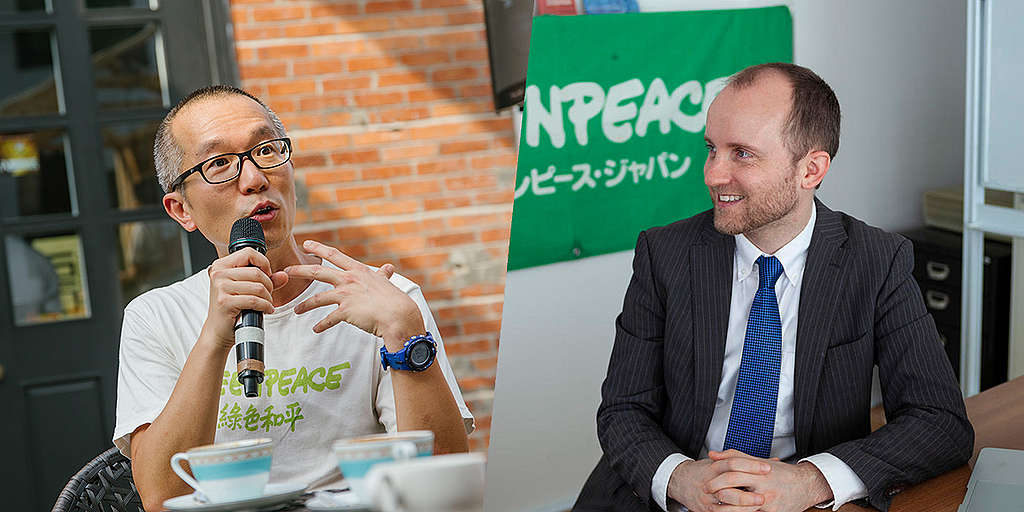
The new partnership
Q: Where did the idea of the partnership come from?
Sam: GPJ celebrated its 30th anniversary in 2019. For me that was a really good opportunity to step back and reflect on the impact we’ve had in Japan over the past 30 years. And there’s a lot to celebrate. We’ve had some fantastic campaigns and some really good results. But then my attention turned to the next 30 years. How can we have an even bigger impact? We had started working on an informal basis with the fundraising team in GPEA and that really gave me a crazy idea about what would happen if we combined our strengths and our diversity even more. That’s why I reached out to KT to discuss a closer partnership in early 2020.
KT: As we are both East Asia-based offices, the idea that the two offices can actually come together has been in the background for many years but it was Sam who took the initiative to see how we could cooperate even further. Once he approached us, we said why not. Let’s discuss it and see what we come up with.
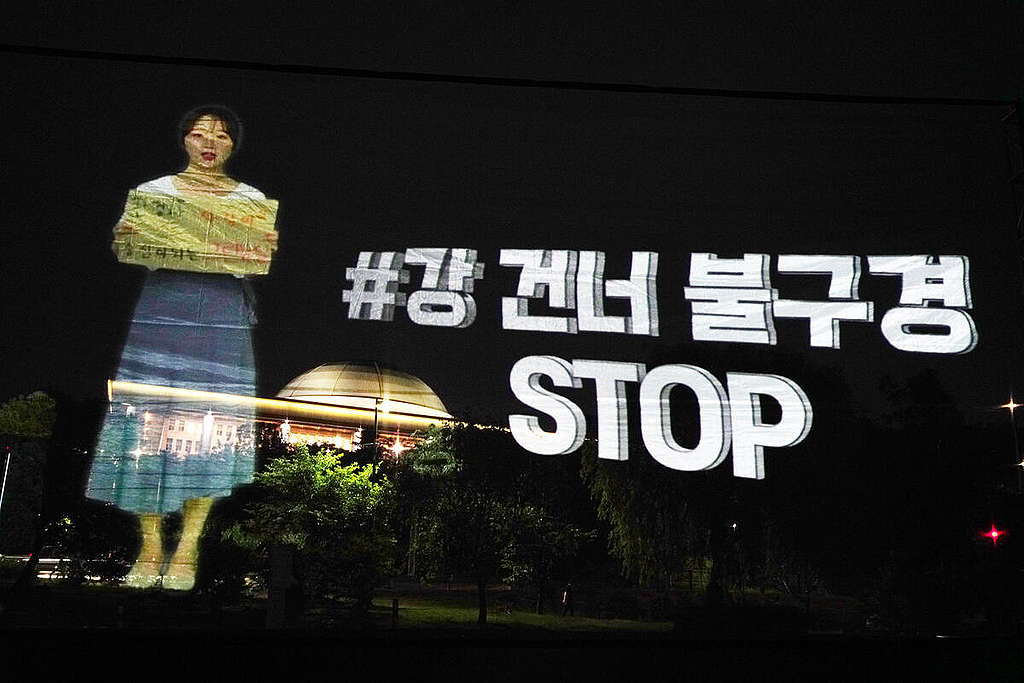
Q: What will be the focus in 2021 for the offices then?
Sam: We’re a campaigning organization; campaigning is at the heart of what we do so I’m really looking forward to the work we can do on campaigns.
I take very seriously the responsibility that comes with the fact that East Asia has two of the three largest economies in the world. I think that’s a big responsibility on us as Greenpeace in this region, to have an impact on changing policies, and if we can change policies here, I really believe that can have a ripple effect around the world.
KT: A few months ago, China, Japan and Korea all came out with carbon neutral pledges. It’s not just a coincidence that they came up with the pledges around the same time. It shows there is a big shift happening in this region and it shows there is a regional dynamic going on. A closer cooperation between the two offices means we are going to be able to utilize this regional dynamic.
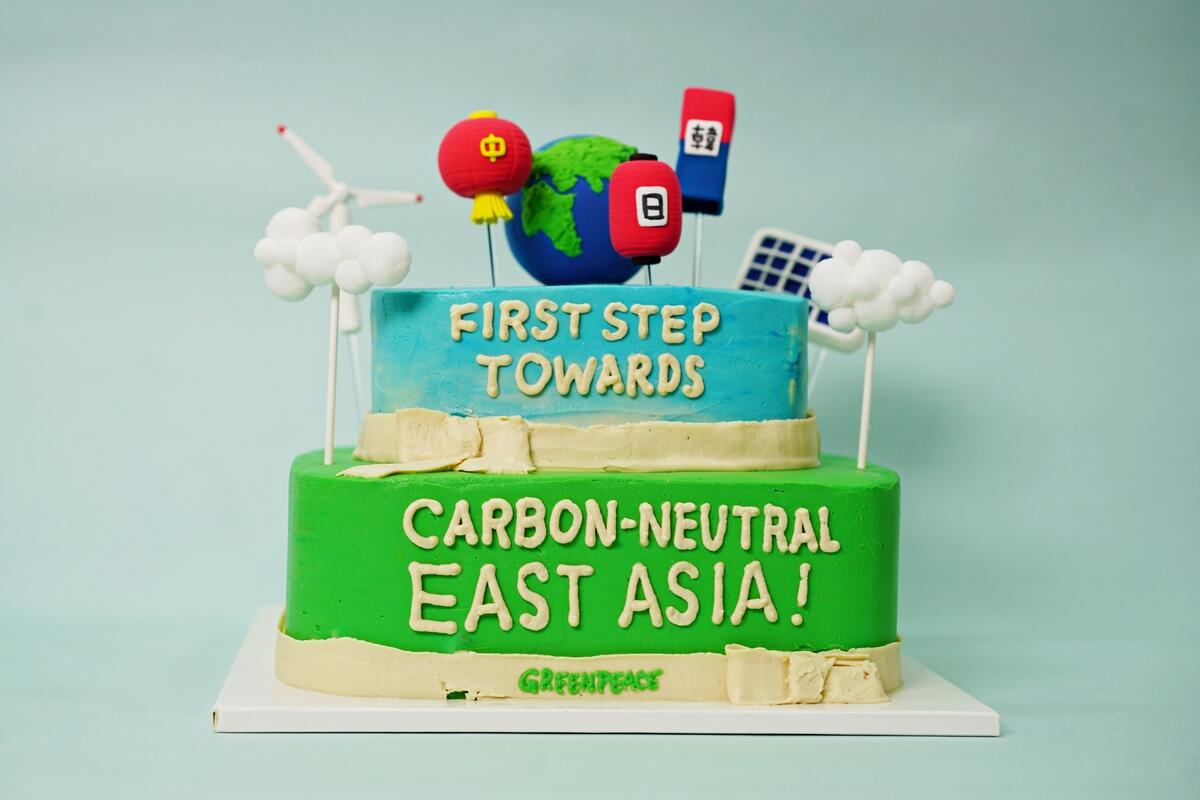
The two offices
Q: What was your first impression of the other office?
KT: The campaign out of the Japanese office that most impressed me was the Fukushima work; it showed Greenpeace at its best. In a time of crisis and also danger, Greenpeace was able to quickly form a team comprised of local staff and global experts that did ground-breaking work and continues to do so with its follow-up work going back every year. That also shows persistence.
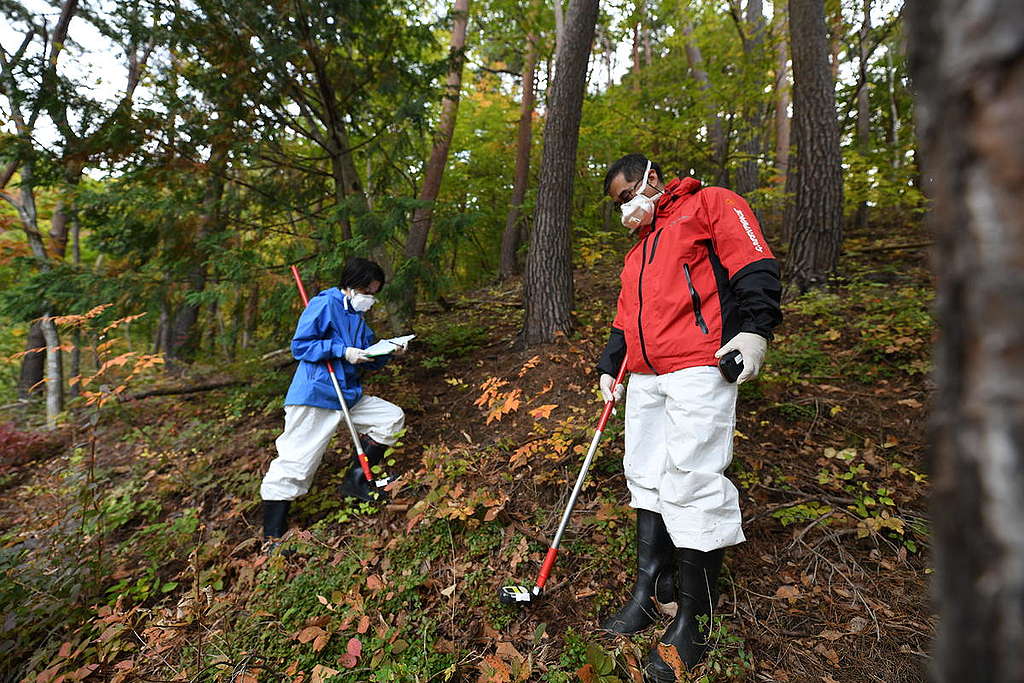
The Japan office is operating in a very challenging environment. The more I learn about Japan, the more I understand how difficult it is to be successful as a campaigning organization there. If you are trying to challenge authority, if you are trying to push powerful figures to change, Japan is very challenging.
Sam: Two things stand out for me. First is the air pollution campaign, that was launched a few years back. The second was the sea level rise simulation and that’s something we’re collaborating over now. Both of those campaigns are really good examples of how you can engage the public and take them on a journey towards really understanding climate change. I think the EA office does those things really well.
Q: What strengths do your offices bring to this partnership?
Sam: Greenpeace Japan is an office of about 40 staff, based out of an office in Tokyo. We’ve been active in Japan since 1989, and over that time we’ve gradually grown in terms of numbers, and we’ve been involved in many campaigns. We’ve been involved in anti-nuclear work, biodiversity, sustainable oceans, plastics, Fukushima, and food security. And of course global campaigns such as Detox, Cool IT, and palm oil etc.
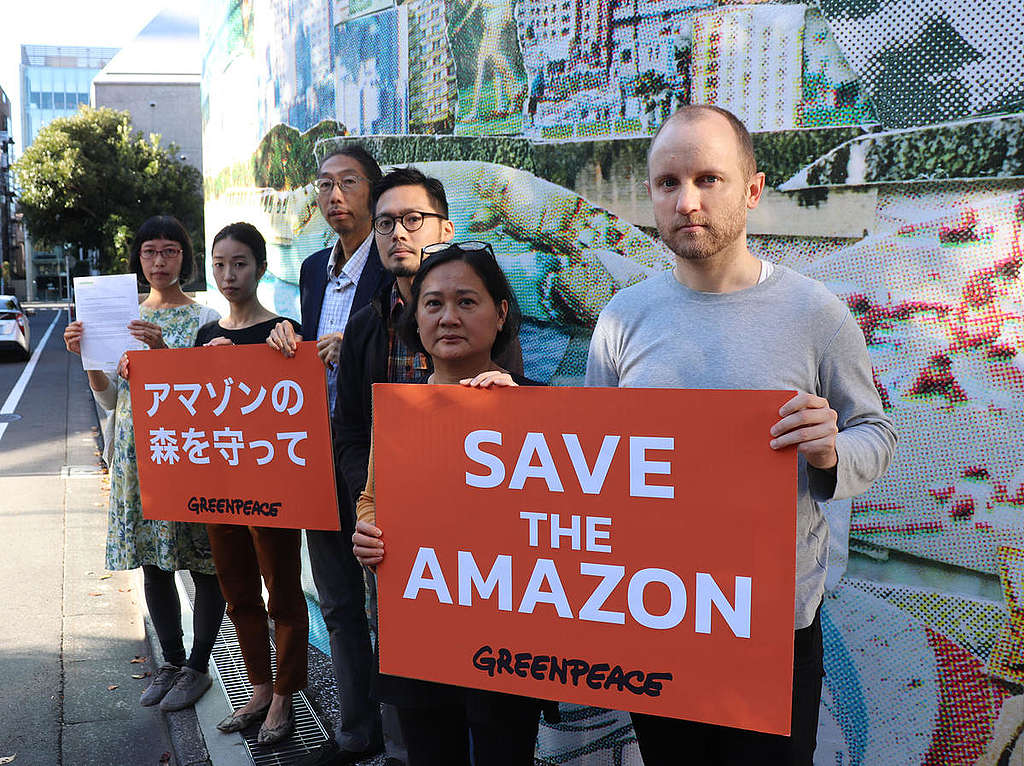
The work we’ve been doing in Fukushima since 2011 really stands out. For us it’s something that we are particularly proud of and we go back there every year to take further readings of local radiation. We have strong support from local communities there, too. At the end of the day, that shows us we’re doing the right thing. The local communities are grateful for the impartial science-based information that we can provide. We can push the government in the right direction. An interesting example of that is about a year ago when we went up there for the annual survey, we found there were radioactive hotspots on the routes of the Olympic torch that the government planned to start from Fukushima. They wanted to use the Olympics to create an illusion that everything was back to normal in the disaster area. But through our research we were able to show that it absolutely wasn’t back to normal. Our work has shown the very real and long-term risks of nuclear power and the urgent need for an energy transition, not just for a world without a climate emergency but also a world that is safe for present and future generations.
We work in a challenging environment, as KT mentioned. It’s not an easy country to do campaign work. Nevertheless, we are all motivated and passionate. Some of our staff have been with us for over 20 years.
KT: In November 2020, we crossed the 200,000 donors mark in East Asia. I feel very proud of building up a sizeable public support and movement in this part of the world. A big part of why I work with Greenpeace is to build up a truly influential environmental NGO that can shape the environment in East Asia. In order to be influential, you do need that kind of public support. And if you think of Asia as the future, as the area with the largest population, this is where Greenpeace really needs to be. I am also proud that we are able to live up to that challenge.
The climate crisis
Q: How can we tackle the climate crisis together?
Sam: I think the three carbon neutral pledges from China, Korea and Japan were made with fantastic timing. It made me think that the governments were listening in to the conversations we were having; they were aligning their policy decisions with our partnership plans!
KT: China, Korea and Japan represent one third of global emissions, so it’s extremely critical for Greenpeace and for the environmental movement in general to be successful here. It’s a critical area for tackling climate change. And as Sam said, this is the perfect time for our partnership. We’ll be looking to make sure their actions on going carbon neutral are early rather than waiting for the last ten or 20 years to implement the vision. I think that’s extremely important.
We know there’s also competition among the governments too. We can share our intelligence and formulate our strategies in a way that can maximize the dynamic in a more positive way. We’ll be sharing resources behind the scenes. For example, we have a geographical information expert based in Hong Kong and she’s already started working with the Japanese team and creating a modelling on sea level rise. That’s the kind of thing I’m also very excited about – sharing our expertise so that we can maximize the use of our limited resources.
Q: What do you think Asia and the world needs right now to tackle the climate crisis?
KT: What we need more of in Asia — and the answer is the same for the rest of the world — is a greater sense of urgency. There is now more of a consensus across different countries and across different governments that climate change is a big crisis. That consensus is much stronger than before and we know there are more than 100 countries that have committed to a carbon zero vision by 2050 — in the case of China, by 2060. What we are still lacking is a realization that there is a short time window for us to be successful and that sense of urgency is still something we have to work on. And that’s the biggest thing that we need to see more of from Asia and the world.
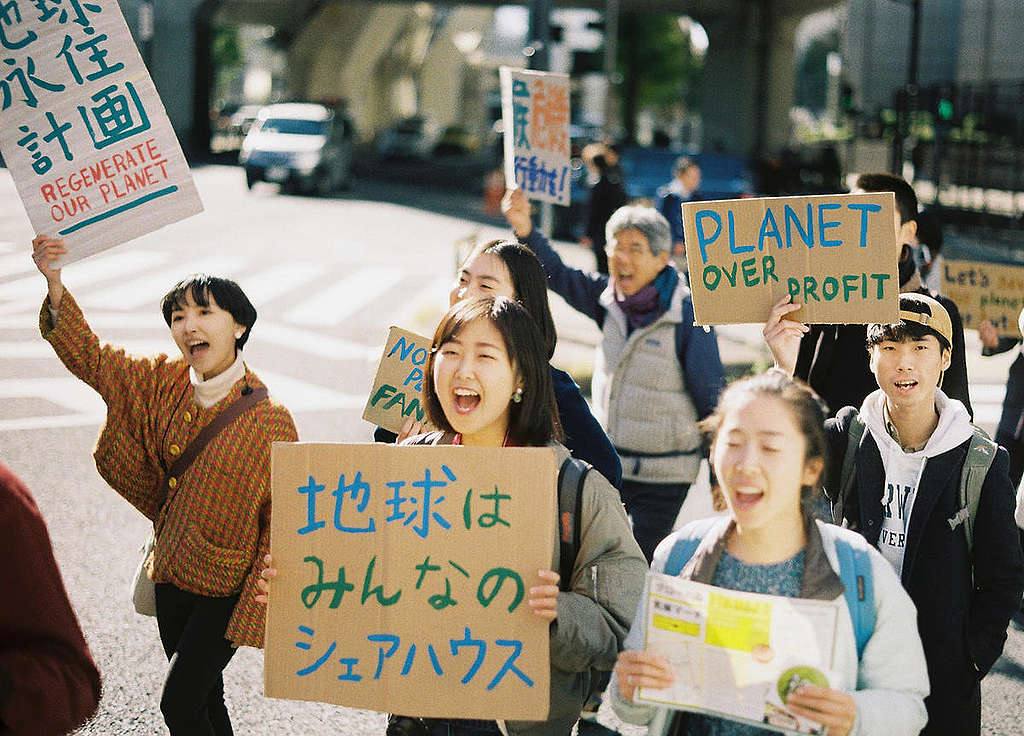
Sam: I would agree. We definitely need that sense of urgency more than anything else. As KT said, we’re starting to see a much stronger consensus than we had in the past. We must now capitalize on the conversations that are starting to happen in boardrooms and in governments around the world that we need to push for carbon neutral because it’s no longer just about a CSR – it’s about our future. It’s critical to take those promises coming out of politicians’ and CEOs’ mouths and hold them to account.
The future
Q: Where do you see ourselves in the next 10 years?
KT: The way I would answer that question is to ask: what would we like to see if we looked back at our work in 10 years’ time? I definitely want to look back and say without regret that we gave it our best shot. That we made our best contribution on our way to stopping climate change. Because the next 10 years is going to be extremely critical. Everything that happens in this office over the next 10 years has to have that priority. Yes, we want to have a stronger office, a bigger support base. But if we get those but we did not do our best job in terms of stopping climate change, all those things are useless because we missed that time window.
Sam: We should always judge ourselves on the impact that we are able to achieve and in this case on the climate crisis. Is what we’re doing actually making a difference or not? I hope that we will be able to say that we had a really meaningful impact.
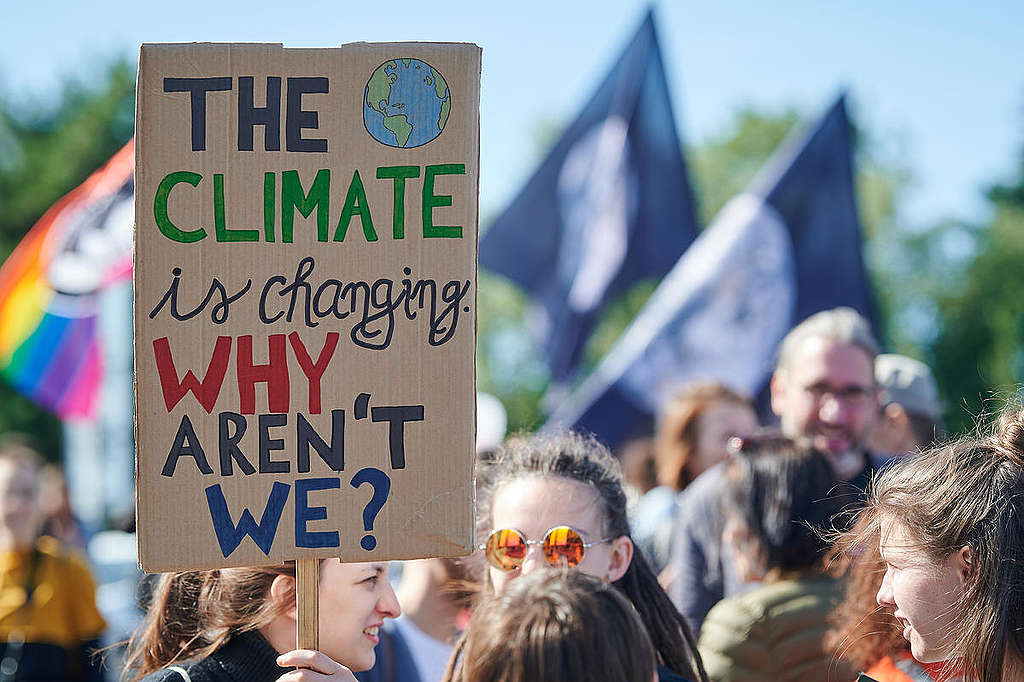
Q: Let’s end on a light-hearted note. Can you pick an animal to represent the other office?
Sam: A cheetah. First of all they’re incredibly fast, the fastest land animal I believe and what I admire about GPEA is that it’s very agile and quick-moving. As an animal, it’s very lean and very graceful. Just like Kontau!
KT: Ask me next year!
